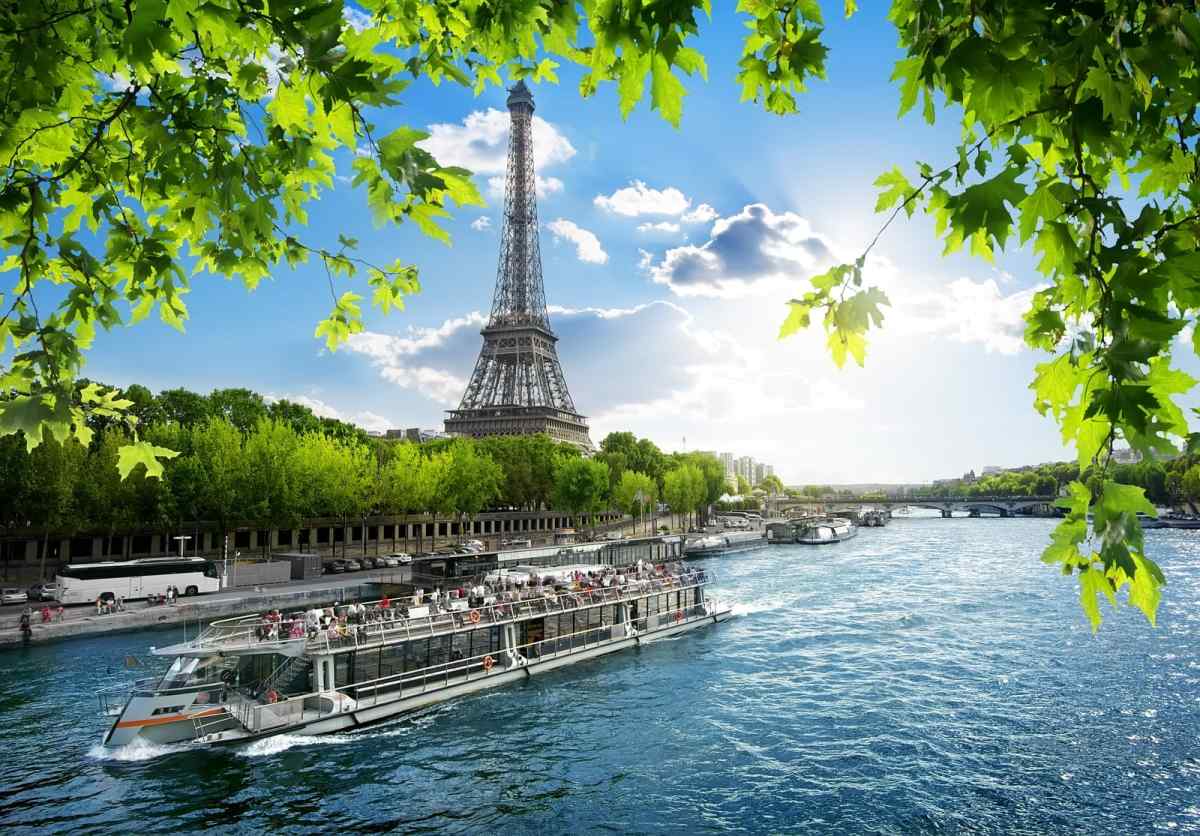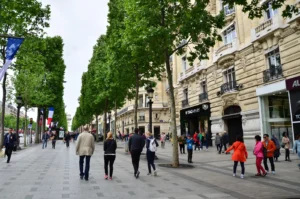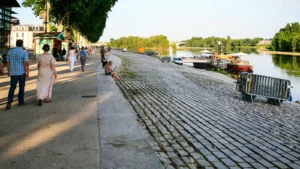A trip to France is often described as a once-in-a-lifetime experience. From its romantic cities to its charming countryside, France offers a wealth of culture, history, and breathtaking landscapes. Whether you’ve dreamed of strolling along the Seine, tasting world-class wine in Bordeaux, or visiting castles in the Loire Valley, this is the place where your dreams come true.
2025 marks an exciting year for travel in France, with new events, trends, and the promise of unforgettable experiences. France’s rich history, artistic heritage, and culinary delights remain timeless, but the country’s evolving tourism scene ensures that even repeat visitors will discover something fresh and captivating.
This guide will help you plan the ultimate once-in-a-lifetime trip to France, from the best times to visit to the must-see destinations and unique experiences you won’t want to miss. Whether you’re a first-time traveler or a seasoned explorer, this is your comprehensive guide to making your French adventure extraordinary.
Must-See Destinations for Your Once in a Lifetime Trip to France
France is a country brimming with iconic destinations, each offering something unique. From the sparkling streets of Paris to the rolling vineyards of Bordeaux, there’s a place for every type of traveler. Below are the best spots to explore during your once-in-a-lifetime trip to France.
Paris: The City of Love and Lights
No visit to France would be complete without spending time in Paris, a city synonymous with romance, culture, and history. Paris is the perfect mix of tradition and modernity, and its influence on art, fashion, and cuisine has made it one of the most visited cities in the world.
Top Attractions in Paris
- Eiffel Tower: One of the most iconic landmarks in the world, offering panoramic views of the city.
- Louvre Museum: Home to thousands of artworks, including the Mona Lisa and the Venus de Milo.
- Notre-Dame Cathedral: A masterpiece of Gothic architecture, offering a glimpse into the city’s history.
People on the street before the Notre Dame Cathedral in central Paris
Hidden Gems
- Le Marais: A charming district filled with boutique shops, galleries, and vibrant cafes.
- Musée de l’Orangerie: A lesser-known museum with Monet’s famous Water Lilies series.
The French Riviera: Glamour and Relaxation
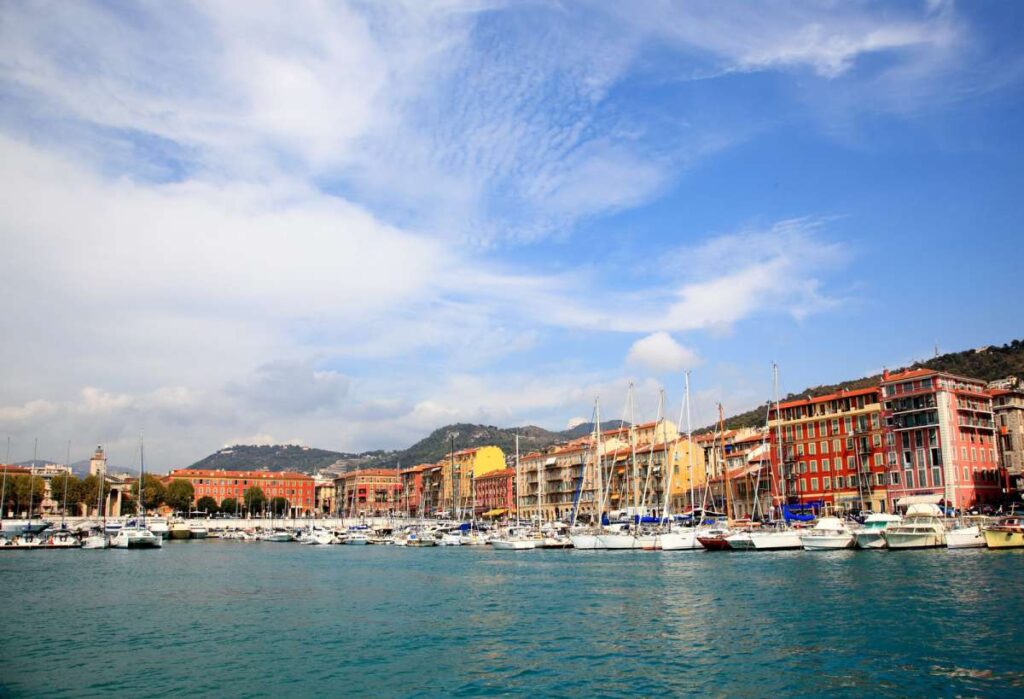
The French Riviera (or Côte d’Azur) is renowned for its luxurious lifestyle, stunning beaches, and glamorous cities. Whether you want to shop in designer boutiques or relax by the Mediterranean, the French Riviera offers a perfect mix of leisure and luxury.
Key Cities to Visit
- Nice is renowned for its stunning beaches and picturesque promenade along the sea. Explore the Old Town (Vieux Nice), wander through the flower market, or relax on the beach.
- Monaco: A tiny city-state, Monaco is famous for its luxurious lifestyle, casinos, and the Prince’s Palace. Whether you visit the world-renowned Monte Carlo Casino or enjoy the Formula 1 Grand Prix, Monaco is a place where extravagance meets beauty.
- Cannes: Renowned globally for the Cannes Film Festival, this city exudes an air of sophistication. Cannes is an ideal destination for those seeking a blend of glamour and Mediterranean beauty. Wander along the Croisette, enjoy beachside dining, or shop at high-end boutiques.
The Loire Valley: Castles and Vineyards
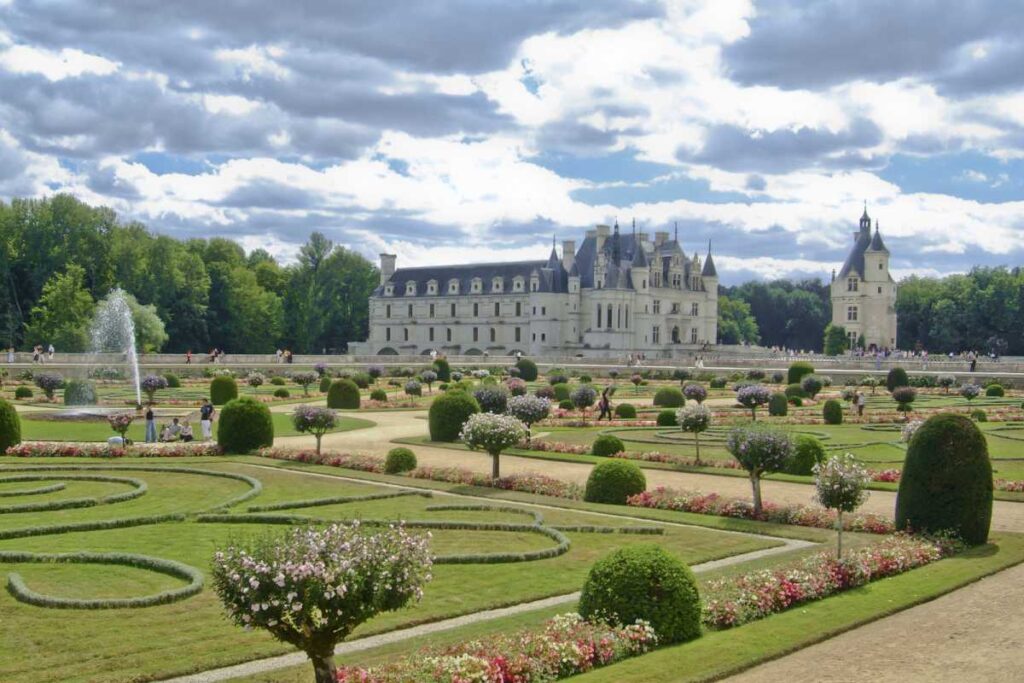
If you love history and fine wine, the Loire Valley is an absolute must. This region is home to some of France’s most impressive castles and lush vineyards.
Must-Visit Castles
- Château de Chambord: This Renaissance castle is one of the most recognizable in France, known for its grand architecture and surrounding parkland. It’s a UNESCO World Heritage site and offers a glimpse into the royal history of France.
- Château de Chenonceau: This beautiful château, spanning the Cher River, is often considered one of the most elegant castles in France. The architecture and gardens make it a photographer’s paradise.
- Vineyard Tours: The Loire Valley is home to some of the best wine in France. Many vineyards offer tours and tastings, allowing you to enjoy the wines that have been made in this region for centuries.
The Loire Valley is also renowned for its charming, picturesque towns, such as Amboise, Tours, and Saumur, where you can savor local French delicacies and bask in the peaceful atmosphere.
Provence: Lavender Fields and Hilltop Villages
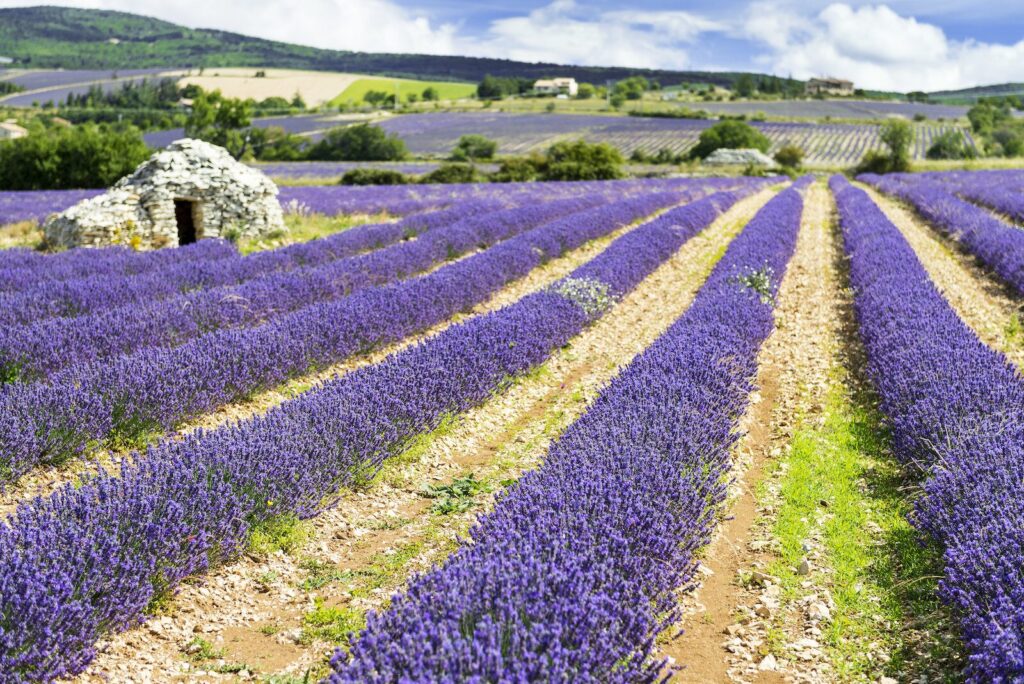
The south of France is a treasure trove of scenic landscapes, from fields of lavender to rolling vineyards. Provence is particularly famous for its natural beauty and quaint villages.
- Lavender Fields: Provence is famous for its lavender fields, which bloom in the summer. A visit during this time allows you to see the vibrant purple fields stretching as far as the eye can see. Valensole Plateau and Sault are two of the best places to experience this natural wonder.
- Hilltop Villages: Villages like Gordes and Roussillon offer stunning views of the surrounding landscapes. Gordes, in particular, is perched high on a hill and offers sweeping views of the Luberon Mountains. Roussillon, known for its red and orange hues, is another must-visit village.
Normandy: History and Natural Beauty
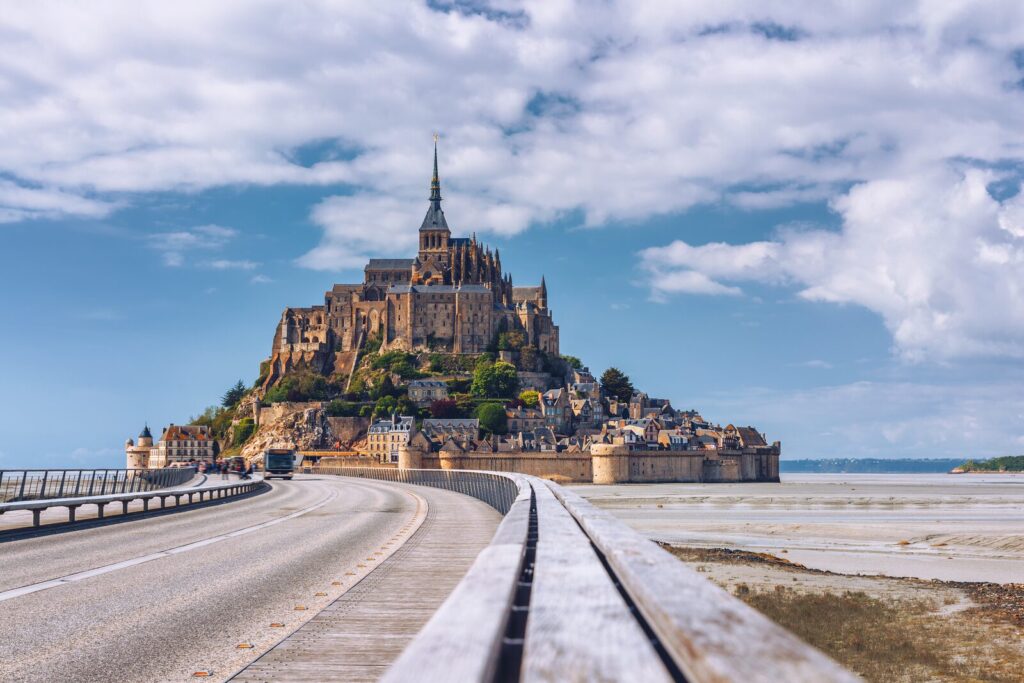
Normandy is steeped in history, boasting famous beaches, historic sites, and a spectacular coastline. From World War II history to breathtaking cliffs, Normandy offers a peaceful retreat from the bustle of larger cities.
- D-Day Beaches: Normandy is home to some of the most important sites of World War II, particularly the D-Day beaches. Visit Omaha Beach, Utah Beach, and the American Cemetery to learn about the heroism and sacrifices made during World War II.
- Mont-Saint-Michel: One of France’s most iconic landmarks, this island commune is a UNESCO World Heritage site, offering stunning views of the surrounding bay. The medieval abbey sits atop the rocky island, offering an awe-inspiring sight.
- Normandy Cuisine: Normandy is also known for its culinary delights, especially Camembert cheese and Normandy cider. Try them at local markets or dine at a traditional crêperie.
Dordogne and Surroundings: Hidden Gems of France
The Dordogne region, situated in southwestern France, is a hidden gem that offers a unique blend of medieval charm, lush landscapes, and historic sites. From castles to prehistoric caves, the Dordogne is perfect for travelers seeking authentic French experiences away from the crowds.
- Sarlat-la-Canéda: This medieval town is one of the most picturesque in France. Its narrow streets, historic buildings, and lively markets make it a delightful place to explore.
- Beynac-et-Cazenac: A beautiful village with a castle perched above the Dordogne River, offering stunning views and a peaceful atmosphere.
- La Roque-Gageac: Another cliffside village with a stunning river view, La Roque-Gageac is an ideal place to relax and appreciate the natural beauty of the Dordogne.
Château de Lasfonds: Your Perfect Base in Dordogne
If you’re looking for the perfect place to stay while exploring Dordogne, Château de Lasfonds offers the ultimate luxury experience. This private estate offers a peaceful retreat, perfect for families or groups seeking privacy and luxury in the heart of one of France’s most beautiful regions.
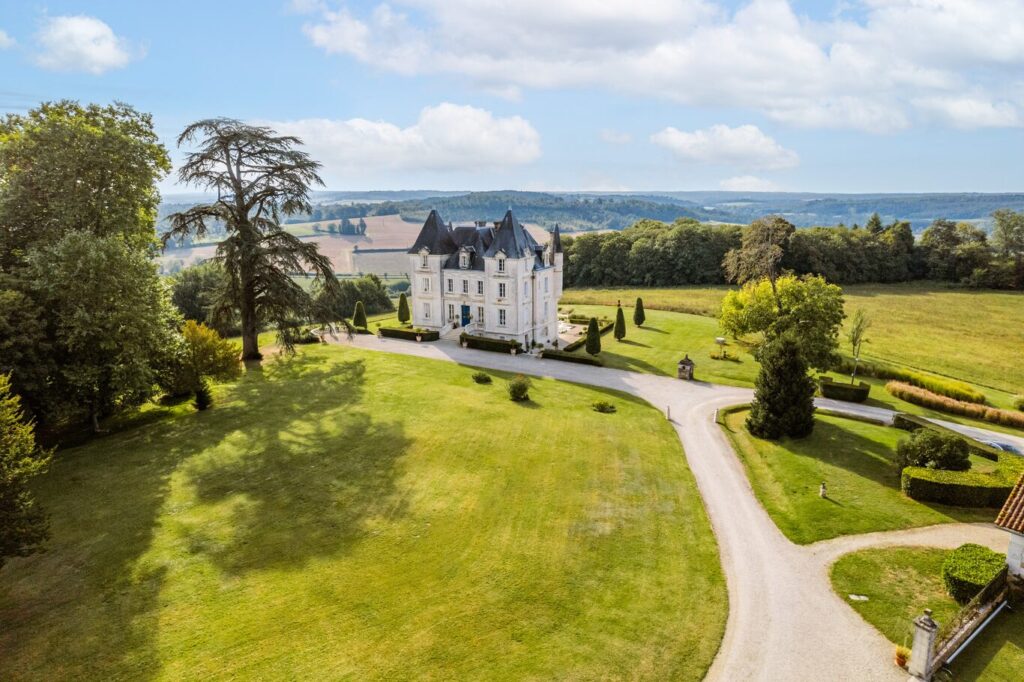
Experience French Culture and Cuisine
A key part of any once-in-a-lifetime trip to France is immersing yourself in its rich culture and world-renowned cuisine. Whether you’re savoring a fresh croissant in Paris or sampling wine in Bordeaux, the French way of life is one of the main draws for travelers.
French Culinary Delights: A Taste of France
France is undoubtedly one of the world’s culinary capitals. Its food is a reflection of its diverse regions, each offering distinct flavors and techniques. French cuisine is not just about fine dining; it’s about enjoying life’s simplest pleasures—from a fresh baguette to a glass of regional wine.
Must-Try Dishes
- Croissants and Pastries: There’s nothing like enjoying a warm, buttery croissant at a café in Paris. French bakeries are renowned for their delectable pastries, which are a must-have for any breakfast or snack.
- Escargot: For the adventurous eater, escargot (snails) served with garlic butter and parsley is a French delicacy. Don’t be intimidated—it’s delicious and a must-try for many.
- Coq au Vin: This traditional French dish features chicken cooked in red wine, often accompanied by mushrooms and bacon. It’s hearty and flavorful, perfect for those who want to indulge in a classic French meal.
- Ratatouille: A vegetable medley from Provence that captures the essence of southern France. Made with eggplant, zucchini, tomatoes, and other fresh produce, it’s a healthy and delicious option.
French Wine Regions
- Bordeaux: Renowned for its red wines, especially Cabernet Sauvignon and Merlot, Bordeaux is the perfect destination for wine lovers. Here, you can tour vineyards, learn about the wine-making process, and enjoy tastings in some of the world’s best wineries.
- Champagne: The region that produces the world-famous sparkling wine, Champagne, offers tours of its vineyards, where you can learn about the process and, of course, enjoy a glass of bubbly.
- Burgundy: Known for producing some of the best Pinot Noir and Chardonnay wines, Burgundy offers an opportunity to indulge in world-class wines while exploring its scenic vineyards.
French Art, Fashion, and Lifestyle
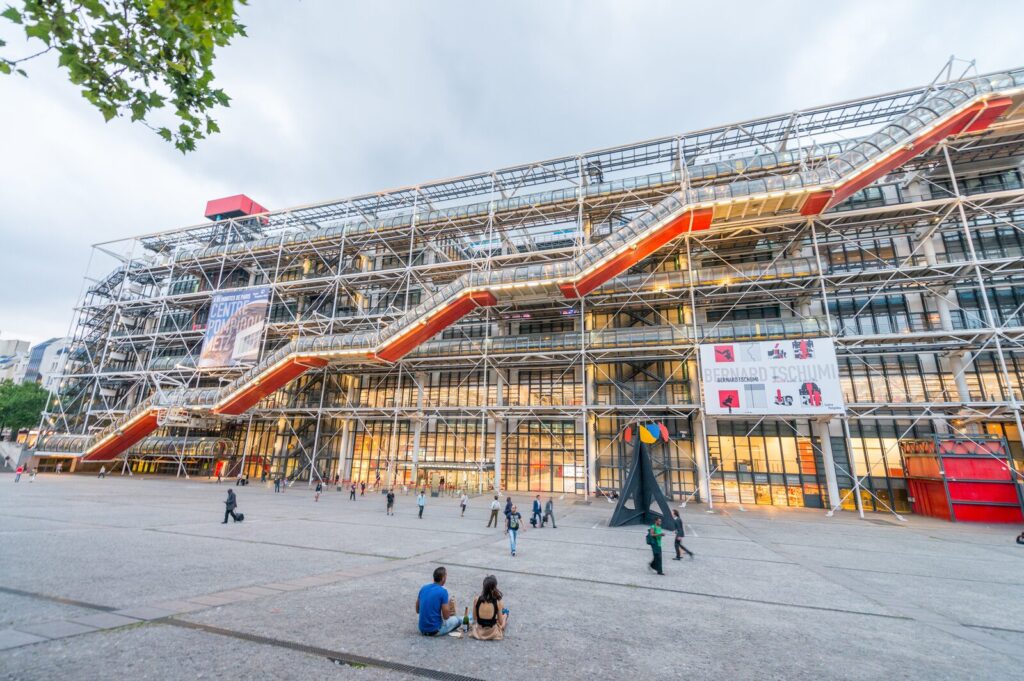
French culture goes beyond food—it’s woven into the fabric of the nation’s lifestyle, fashion, and art. France has long been a hub of creativity and style, and these influences are evident everywhere you go.
Art and Museums
- Musée d’Orsay: Situated in a former train station, this museum houses an extensive collection of Impressionist and Post-Impressionist art. Works by artists such as Monet, Van Gogh, and Degas are displayed in an elegant setting, making it a must-visit destination for art lovers.
- Louvre Museum: One of the world’s most famous art museums, the Louvre houses iconic works such as the Mona Lisa and the Venus de Milo. Its collection spans over 9,000 years of history and includes everything from ancient civilizations to modern masterpieces.
- Centre Pompidou: For contemporary art lovers, the Centre Pompidou in Paris is a hub for avant-garde exhibits, interactive installations, and modern art pieces. The building itself, with its exposed pipes and unique design, is a work of art in itself.
Fashion and Shopping
- Paris Fashion Week: Paris is known as the fashion capital of the world, and Paris Fashion Week is one of the most prestigious events in the industry. Even if you’re not attending a show, the city’s boutiques and department stores are worth visiting, especially in neighborhoods like Champs-Élysées and Le Marais.
- Lyon’s Silk Industry: Lyon has a long history as the silk capital of the world. Today, you can visit the Musée des Tissus (Museum of Textiles) and shop for unique silk products like scarves, ties, and apparel in the city’s many boutiques.
The Best Time to Visit France in 2025
Choosing the right time to visit France is crucial for creating the perfect travel experience. The weather, crowd sizes, and seasonal events can all influence your trip. In this section, we’ll explore the ideal months for visiting and what you can expect depending on when you travel.
Peak Season: June to August
- Pros: The summer months in France offer long days, warm weather, and vibrant cultural festivals. This is the perfect time for beach holidays in the French Riviera, visiting iconic landmarks, and enjoying outdoor cafes. Major events like the Cannes Film Festival and Tour de France take place during this period.
- Cons: The downside of visiting in peak season is the crowds. Cities like Paris and Nice can be crowded with tourists, making it more challenging to get reservations at top restaurants and attractions.
Off-Peak Season: September to November
- Pros: The weather in early fall remains pleasant, but the crowds start to thin. This is the ideal time to visit if you want to avoid the hectic summer rush. September and October also offer incredible autumn foliage, particularly in wine regions such as Bordeaux and Burgundy.
- Cons: While the weather is still great, some tourist attractions may close for the season. It’s also slightly cooler, especially in northern France.
Winter: December to February
- Pros: For winter sports enthusiasts, this is the best time to visit the French Alps. You can enjoy skiing in resorts like Chamonix and Val d’Isère. Additionally, winter in Paris brings a magical holiday atmosphere, complete with Christmas markets and seasonal decorations.
- Cons: In most other parts of the country, the weather is cold, and some outdoor attractions may not be as enjoyable.
Unique Experiences for a Once in a Lifetime Trip
France offers experiences that can’t be found anywhere else. Whether you’re enjoying the serene beauty of the countryside or indulging in a luxurious wine tour, here are a few unique experiences that should be on your radar.
Outdoor Adventures in France
For travelers who love the great outdoors, France has a diverse range of landscapes that offer thrilling activities. From the mountains of the French Alps to the valleys of Dordogne, there’s plenty to explore.
Hiking in the French Alps
The French Alps are famous for their world-class hiking trails. Whether you’re an experienced trekker or just starting out, there are paths suitable for all levels. A hike to the summit of Mont Blanc, the highest peak in the Alps, offers breathtaking views of the surrounding mountains and valleys.
Canoeing on the Dordogne River
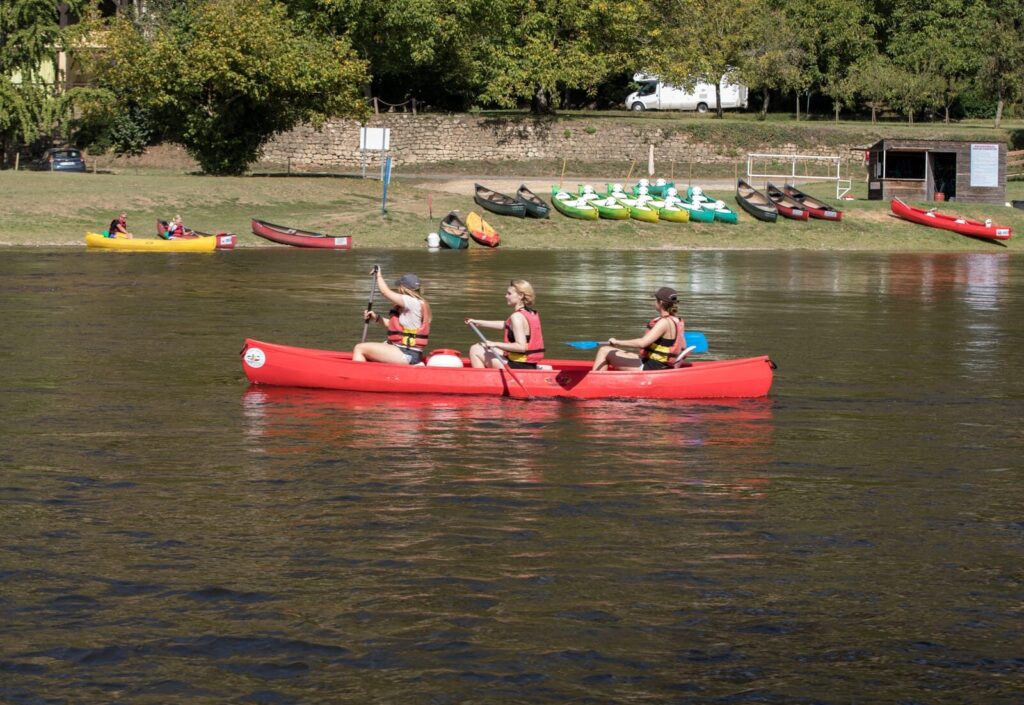
If you’re visiting Dordogne, canoeing along the river is one of the most peaceful and beautiful ways to explore the region. Paddle past medieval castles, lush forests, and stunning cliffs while taking in the tranquility of this picturesque area.
Skiing in the French Pyrenees

For winter sports enthusiasts, the French Pyrenees offer fantastic skiing resorts. With fewer crowds than the Alps, resorts like Font-Romeu and Cauterets offer great slopes for both beginners and experts. The stunning mountain scenery only adds to the experience.
Travel Tips for a Seamless Experience in France
To ensure that your once-in-a-lifetime trip to France goes off without a hitch, there are a few practical travel tips you’ll want to keep in mind. From navigating the country’s efficient transportation system to understanding local customs, these tips will help make your experience smooth and enjoyable.
Transportation: Getting Around in France
France boasts one of the most extensive transportation networks in Europe, making it easy to travel between cities and explore its rural regions. Here are some options to consider:
High-Speed Trains (TGV)
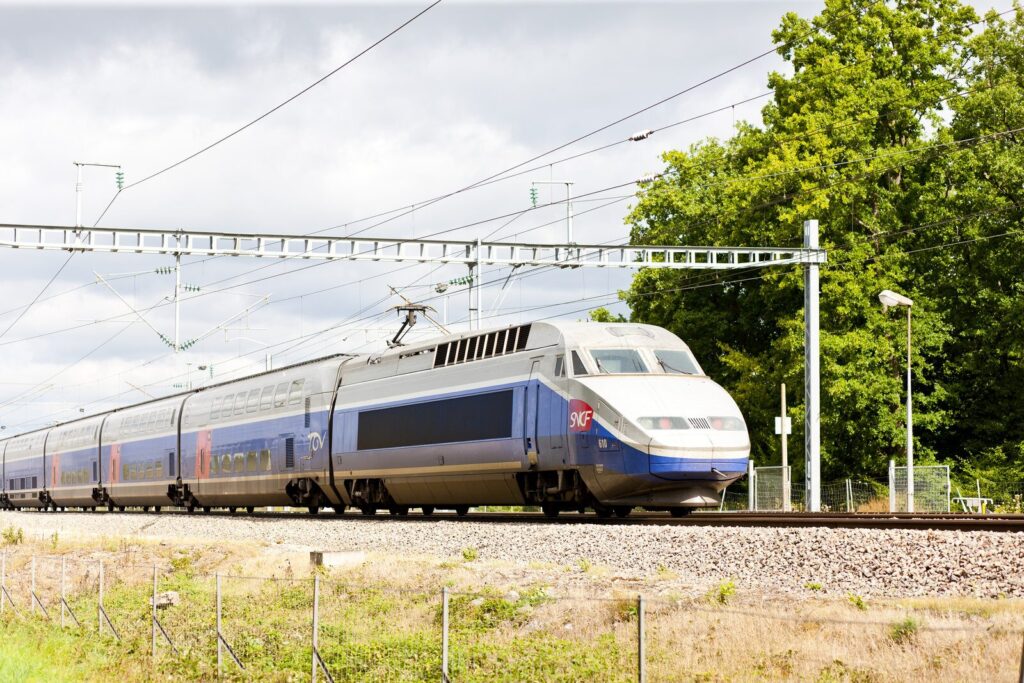
The TGV (Train à Grande Vitesse) is France’s high-speed train system, and it’s one of the most efficient ways to travel across the country. The TGV connects major cities such as Paris, Lyon, Marseille, and Bordeaux, making it easy to travel between urban areas in comfort and speed. Train stations are conveniently located, and trains offer onboard amenities, including free Wi-Fi and snack carts.
- Pro Tip: Book your tickets in advance to get the best prices. The TGV can get quite busy, especially in peak seasons, so early reservations are recommended.
Public Transportation
- Paris Metro: Paris is renowned for its extensive metro system, one of the largest in the world. It’s affordable and easy to navigate, making it an ideal way to get around the city. The metro is well-connected to popular attractions, including the Louvre, Eiffel Tower, and Montmartre.
- Bus and Tram Services: In cities like Nice and Lyon, buses and trams are also excellent options for navigating the city.
Renting a Car
If you plan to explore rural regions like Provence or Dordogne, renting a car is a great option. It provides you with the flexibility to visit smaller towns and villages that are more difficult to reach by public transport. Be sure to familiarize yourself with the French road signs and rules before hitting the road.
- Pro Tip: If you plan on renting a car, remember that driving in cities like Paris can be challenging due to narrow streets and heavy traffic. Parking can also be difficult and expensive.
Language Tips: Speaking Like a Local
While many people in tourist areas speak English, learning a few basic French phrases will enhance your experience and show respect for the local culture. Here are a few essential phrases to help you communicate:
- Bonjour (Hello)
- Merci (Thank you)
- S’il vous plaît (Please)
- Excusez-moi, parlez-vous anglais ? (Excuse me, do you speak English?)
- Où est…? (Where is…?)
It’s always appreciated when visitors make the effort to speak French, even if it’s just a few words. Additionally, French people tend to be more forgiving if you at least try to greet them in their language, even if your accent isn’t perfect!
- Pro Tip: Learn how to say “Bonjour” when entering shops, restaurants, and cafés. It’s a common greeting and shows respect for local etiquette.
Currency and Budgeting: What to Know About Money in France
The official currency in France is the Euro (€). While credit and debit cards are widely accepted in most urban areas, it’s always a good idea to carry some cash, especially in smaller towns or for certain purchases, such as souvenirs and local markets.
ATMs and Currency Exchange
- ATMs are widely available throughout France, allowing you to withdraw cash using your international debit or credit card. Be mindful of any withdrawal fees associated with using foreign cards.
- If you’re exchanging money at an exchange office, compare rates to ensure you get the best deal. Airports and train stations often have higher exchange rates than local banks or currency exchange shops.
Tipping in France
- Tipping is not mandatory in France, as service charges are generally included in the bill (it’s often stated as “service compris” on the menu). However, leaving a small tip (around 5-10%) for exceptional service is appreciated. This applies to restaurants, cafés, and taxi drivers.
Budgeting for Your Trip
- Dining: France offers a diverse range of dining options, from affordable bistros to fine dining establishments. For a budget-friendly meal, opt for a local bistro or crêperie. For a fine dining experience, Michelin-starred restaurants in cities like Paris offer an unforgettable gastronomic experience.
- Attractions: Many of France’s top attractions, such as the Eiffel Tower and the Louvre Museum, offer discounted entry for students, seniors, and sometimes even free entry on select days. Check ahead to plan accordingly.
Pro Tip: If you plan to visit several museums and attractions, consider purchasing a Paris Museum Pass or a city pass for other cities. These passes often include skip-the-line access and discounts on admissions.
Why You Should Consider Château de Lasfonds for Your Stay
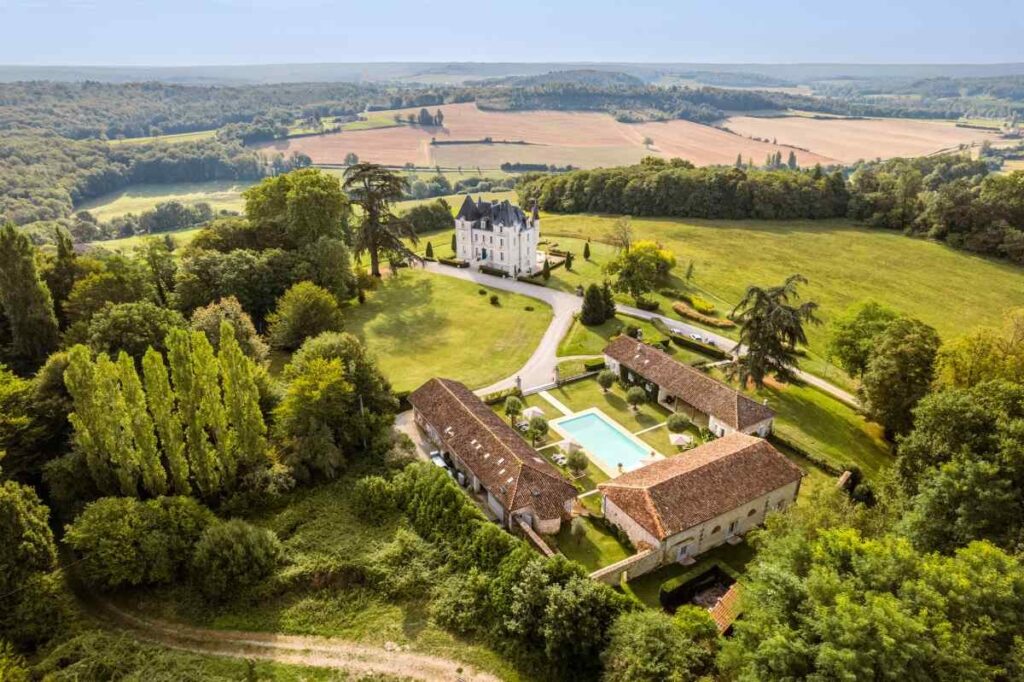
For a truly unforgettable stay in Dordogne, Château de Lasfonds offers an unparalleled combination of luxury, privacy, and authentic French charm. Situated in the heart of one of France’s most picturesque regions, this private estate promises an extraordinary base for your once-in-a-lifetime trip to France.
A Luxurious Retreat in the Heart of Dordogne
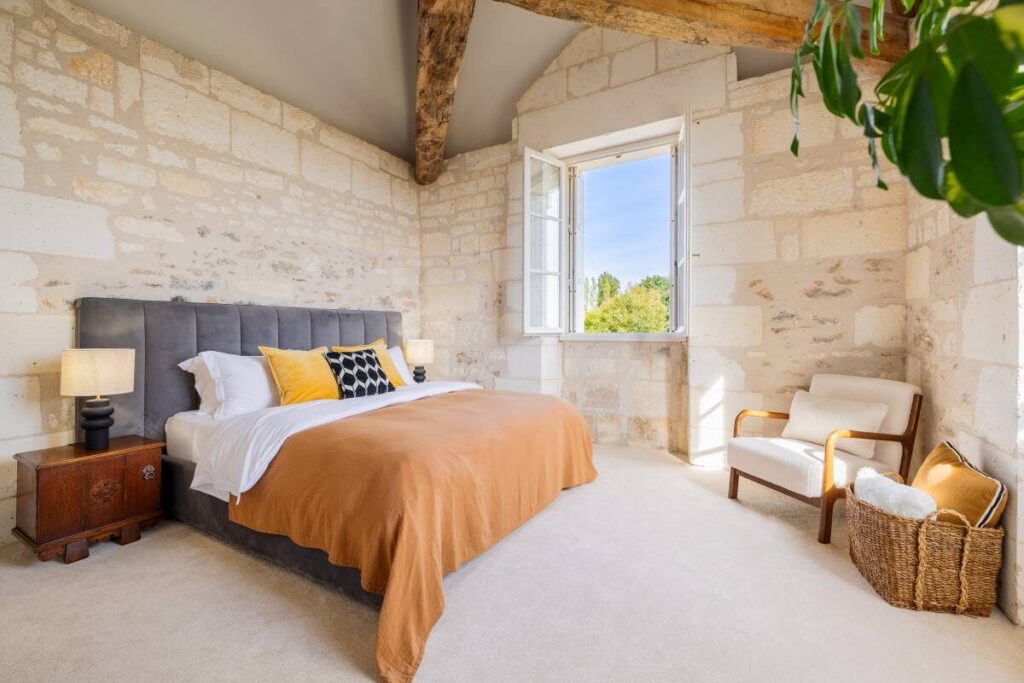
Château de Lasfonds is more than just a place to stay—it’s an unforgettable experience. This stunning estate is nestled amidst the natural beauty of Dordogne, offering peace, seclusion, and a touch of grandeur. Whether you’re seeking a peaceful retreat or an adventurous getaway, the château offers the perfect balance of comfort and exclusivity.
The property’s setting provides the ideal environment for those seeking to disconnect from the hustle and bustle of city life, while remaining within reach of some of France’s most beautiful sights and historical sites. The château’s combination of modern amenities and historic charm makes it a perfect choice for families, couples, and groups alike.
Exceptional Comfort and Modern Amenities
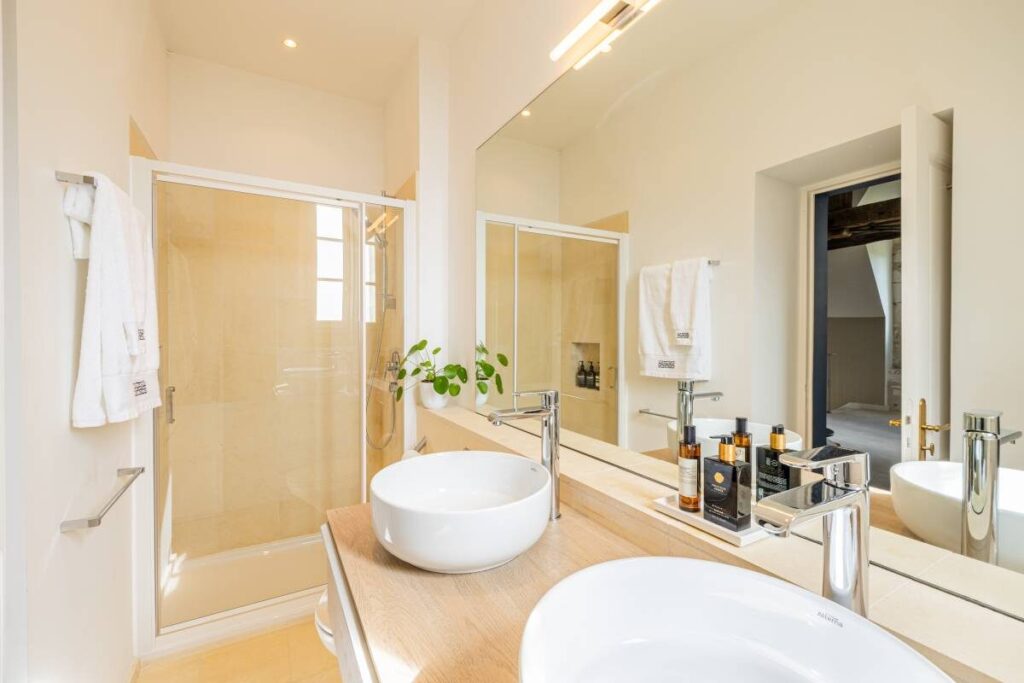
Château de Lasfonds seamlessly blends modern comfort with the elegance of a historic French estate. Every detail has been thoughtfully designed to provide you with a luxurious stay.
- Air Conditioning: Enjoy cool, comfortable interiors even during the warmer months.
- Fully Equipped Kitchens: Whether you’re preparing a casual meal or an elaborate dinner, the château’s modern kitchens offer everything you need to cook like a local.
- Fitness and Wellness: With a private gym and a sauna, the château ensures you can relax and stay active during your stay.
- Outdoor Amenities: The expansive grounds feature a BBQ area, perfect for al fresco dining, and a beautiful garden where you can unwind with a glass of wine after a day of exploring.
An Ideal Location to Explore Dordogne
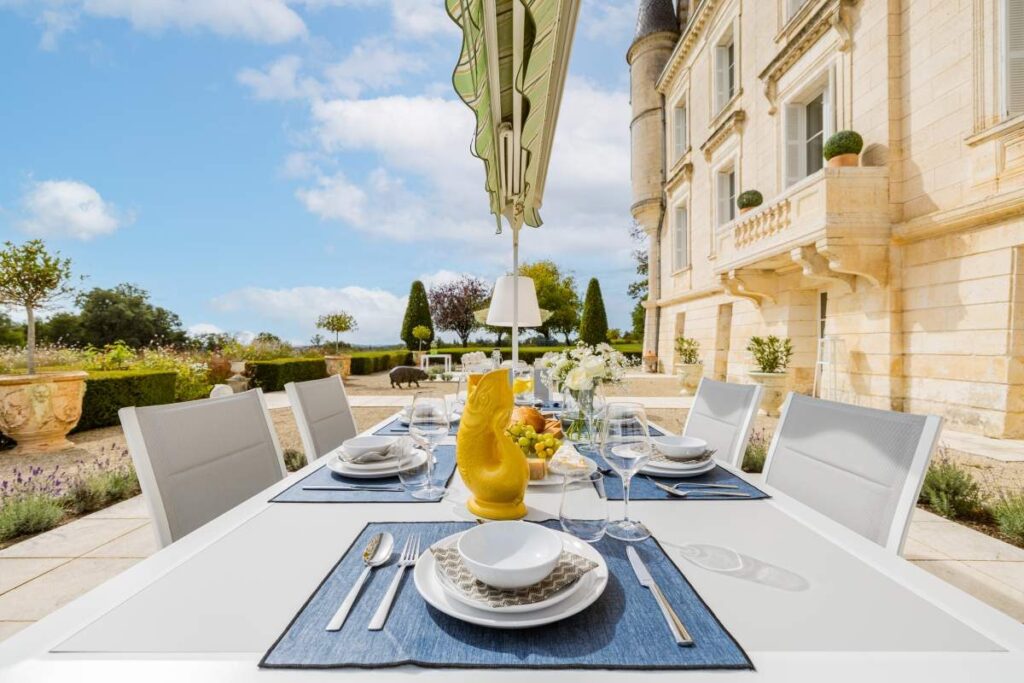
Located just a short drive from some of the most enchanting towns and landmarks in Dordogne, Château de Lasfonds is the ideal base for exploring the region.
- Close to Historic Towns: Explore the medieval town of Sarlat-la-Canéda, a UNESCO World Heritage site, with its charming stone buildings and bustling market. Other nearby towns, such as Beynac-et-Cazenac and La Roque-Gageac, are equally picturesque, offering sweeping views of the Dordogne River and surrounding landscapes.
- Nature and Outdoor Activities: The Dordogne River is ideal for activities such as canoeing and kayaking, while the surrounding countryside is perfect for hiking and cycling. The region’s natural beauty is a major draw for outdoor enthusiasts.
- Historical Sites: Dordogne is home to some of the most significant prehistoric caves in the world, including the Lascaux Caves. These caves contain ancient wall paintings that offer a glimpse into the region’s distant past.
A Perfect Stay for Families, Couples, and Groups

Whether you’re traveling with family, a loved one, or a group of friends, Château de Lasfonds provides the ideal environment for a memorable stay.
- For Families: The spacious grounds, full kitchens, and multiple bedrooms make it an ideal choice for families. Kids will enjoy exploring the gardens and nearby countryside, while parents can relax in the comfort of the château.
- For Couples: Looking for a romantic getaway? Château de Lasfonds offers a serene, intimate setting. Enjoy cozy dinners, quiet evenings by the fire, or take a peaceful walk through the beautiful grounds.
- For Groups: The château is also ideal for large groups seeking an exclusive retreat. With multiple bedrooms, ample living space, and the opportunity to enjoy private or shared moments, it’s an excellent choice for family reunions, anniversaries, or special occasions.
Book Your Stay at Château de Lasfonds Today!
If you’re planning a once-in-a-lifetime trip to Dordogne, staying at Château de Lasfonds should be at the top of your list. With its luxurious accommodations, modern amenities, and prime location in one of France’s most beautiful regions, the château offers the perfect base for your French adventure.Don’t miss out on this unique opportunity to experience the best of Dordogne. Book your stay at Château de Lasfonds today, and create lasting memories in the heart of France.
FAQs about Once in a Lifetime Trip to France
To travel around France affordably, consider using the TGV (high-speed train) for intercity travel, as it’s efficient and often cheaper when booked in advance. In cities like Paris, public transportation is easy to use, and a Metro pass can save you money. For rural areas, renting a car offers flexibility and cost savings if you plan to visit multiple smaller towns.
Yes, many of Paris’ attractions are free to enjoy. Visit Montmartre, explore the Luxembourg Gardens, and admire Street Art in Belleville. You can also enjoy free entry to several museums on the first Sunday of each month, including Musée d’Art Moderne and Petit Palais. Walking around the city and admiring the architecture is free and often the best way to soak in Paris’ charm.
Absolutely! Normandy is less crowded during the off-peak season, allowing for a more peaceful and reflective visit, especially when exploring historical sites such as the D-Day beaches and Mont-Saint-Michel. The quieter months also mean lower accommodation prices and fewer tourists, making it easier to enjoy the region’s natural beauty and rich history.
A two to three-day trip to Bordeaux’s wine region is ideal for a leisurely exploration. You can visit a few renowned vineyards, enjoy wine tastings, and explore the city’s vibrant wine culture. For wine enthusiasts, a longer stay may be worth it, as there are several vineyards and charming towns to discover, like Saint-Émilion and Pauillac.
To truly experience the beauty of the French countryside, rent a car. This gives you the freedom to visit quaint villages, explore vineyards, and enjoy the natural landscapes at your own pace. Alternatively, consider renting a bike if you’re staying in a more rural area like Provence or Dordogne, where cycling through fields and along rivers is a great way to connect with the landscape.
Yes! France is home to many delicious street foods that offer authentic tastes of local culture. Try crêpes (thin pancakes) in Brittany, falafel in Le Marais (Paris), baguette sandwiches from a local boulangerie, and croc monsieur (grilled ham and cheese sandwich) in cafes. Don’t forget to grab a macaron for dessert!
The best time to visit the lavender fields in Provence is from late June to early August when the fields are in full bloom. The lavender typically reaches its peak in July, creating a breathtaking sight with vibrant purple hues stretching as far as the eye can see.
While the French Riviera is known for its luxury, there are plenty of ways to experience the region on a budget. Visit Nice or Cannes and enjoy the public beaches, walk around the Old Town (Vieux Nice), or hike up Mont Boron for panoramic views of the coast. You can also explore local markets, enjoy affordable Mediterranean meals, and use public transportation to travel between cities.
A château stay offers a more historic and luxurious experience, where you stay in a grand, often centuries-old property surrounded by beautiful gardens and the countryside. In contrast, a vineyard stay is ideal for wine enthusiasts, offering direct access to vineyards and the opportunity to experience wine-making firsthand. Both offer unique experiences, but château stays tend to focus more on luxury, while vineyard stays focus on the local wine culture.
Yes, the beaches of Normandy are open year-round, although the weather can be chilly during the winter months. The D-Day beaches are a year-round attraction for history enthusiasts, and the coastline offers stunning views regardless of the time of year. However, summer is the most popular time for beach activities, including walking along the shores and visiting the picturesque seaside towns.
In 2025, you can expect to see some exciting events in France, including the 24 Hours of Le Mans, a world-famous endurance car race, and the Cannes Film Festival, one of the most prestigious film events globally. Additionally, be sure to check out Fête de la Musique in June, a nationwide celebration of music, and the Tour de France, a must-see event for cycling enthusiasts.
Yes, France is generally safe for solo travelers. Cities like Paris, Lyon, and Marseille are safe for tourists, but like any major destination, it’s always important to stay vigilant in crowded areas. Pickpocketing can happen, especially in tourist hotspots, so be sure to keep your belongings secure and stick to well-lit areas after dark.
To experience Paris without the crowds, visit during the off-peak seasons (September to November or January to March). Explore lesser-known neighborhoods like Le Marais, Canal Saint-Martin, or Belleville. Opt for early morning visits to popular attractions like the Louvre or Eiffel Tower, and consider hidden gems like the Musée de l’Orangerie or the Rodin Museum for a quieter experience.
For a journey into France’s medieval past, visit towns like Carcassonne, a well-preserved walled city, or Rocamadour in Dordogne, which sits on a cliffside and features a stunning sanctuary. Castles like Château de Versailles or Château de Chambord are also excellent examples of medieval architecture. Lastly, don’t miss the Pont du Gard, a Roman aqueduct in Provence that stands as a symbol of France’s ancient history.
To get the most out of your Bordeaux wine tour, consider joining a private wine tasting to learn about the wine-making process directly from experts. Explore vineyards in the Saint-Émilion or Pauillac regions, where you can sample some of the finest Bordeaux wines. A guided tour will provide you with insights into the history, terroir, and unique flavors of Bordeaux’s wines, making it a memorable experience.
